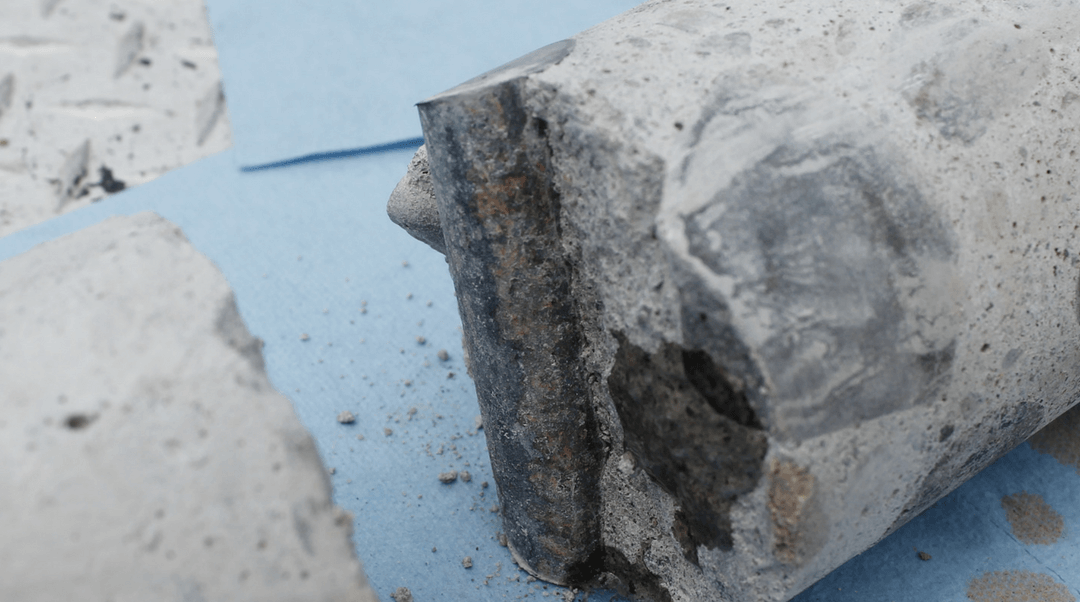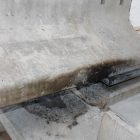In this article, we will review the applications and use cases of non-destructive testing methods for the evaluation of concrete structures in mine facilities. We will discuss how structural engineers can use data obtained from NDT/NDE to assess the structural details of a wide range of structural elements, and accurately evaluate the structural integrity, and durability performance issues of concrete.
Concrete Structures in Mine Facilities
Concrete structures play an important role in mine facilities. They shape and/or support some of the most critical structures such as:
👉 Storage silos
👉 Settling basins
👉 Process tanks
👉 Hoist towers
👉 Chimney Stack
👉 The foundation of smelters and rotary equipment

However, concrete structures are often overlooked by the majority of owners and maintenance managers. The result of this ignorance is that many sub-standard concrete structures in mine facilities are used way beyond their service life, which in turn results in an increased risk of serious failure.
👉 Since most of these concrete structures are generally exposed, they are vulnerable to the environmental loads and negative impacts of the harsh climate. This would accelerate their deterioration, which in turn could result in a number of structural defects and/or unsatisfactory durability performance.
👉 Routine Inspection and Structural Condition Assessment of these facilities will minimize (or eliminate) the risk of catastrophic failures, and unwanted shutdowns (downtimes) of the system. In this article, we will review how digital inspection and non-destructive testing and evaluation can help engineers identify the location, extent and severity of structural defects. Moreover, we will review how NDT/NDE can help engineers collect key information about the structural details, such as rebar spacing, rebar size, and key characteristics of concrete materials (strength and durability).
Non-destructive Evaluation of Concrete Structures in Mine Facilities
There is a wide range of non-destructive testing and evaluation methods that can help engineers assess the health and condition of any given concrete structure.
In this section, we will review some of the most common challenges engineers face when evaluating structural systems, and we will review how existing NDT/NDE methods can help.
1- Structural Details – Steel Reinforcement
Challenges
Steel bars are critical components of every RC element. A structural engineers requires the following parameters to develop a better understanding of structural performance and durability performance:
- Rebar spacing
- Rebar size
- Rebar depth
- Rebar continuity (lap splices, and embedment depth)
Potential Solutions
- Ground Penetrating Radar (GPR) can help map steel rebar in concrete structures. The following can be assessed using GPR:
- Rebar locations
- Rebar Spacing and Continuity
- Eddy Current can be used to assess the following key parameters:
- Cover thickness
- Rebar Size


2- Structural Details – Concrete Thickness
Challenges
Estimating the thickness of concrete elements with one side access can be challenging. Examples are
- Retaining Walls
- Access Shafts
- Tunnel Linings
- Slabs with access from top or bottom only
Potential Solutions
- Impact-Echo can be used to assess the thickness of concrete elements (with one-side access). It can also detect subsurface defects such as delamination.
- Ultrasonic Pulse Echo Tomography can be used to assess the following key parameters:
- anomalies such as honeycombing and poor-quality concrete
- Thickness of concrete elements


3- Structural Integrity of the Concrete Structures
A wide range of non-destructive Testing and Evaluation methods can be used to assess the uniformity, quality and integrity of concrete structures and foundations.
Challenges
When an asset owner plans to rehabilitate or repurpose an existing concrete structure, evaluating the quality, integrity and uniformity of the existing structure becomes critical:
- Uniformity and quality of existing elements.
- Assess the extent and severity of existing defects (cracks, delamination) in existing structures and foundations.
Potential Solutions
The Ultrasonic Pulse Velocity family can be used to assess the overall quality and uniformity of concrete elements in the structure. The test can be performed in various configurations enabling engineers to collect information on the integrity and crack depth of different elements.


4- Compressive Strength of Concrete
Concrete compressive strength is the most important parameter for any rehabilitation design. Intrusive methods such as coring require a significant number of cores to determine the strength of concrete. Non-destructive Testing provides an alternative approach that reduces the number of cores that is needed.
Challenges
Extracting concrete cores to assess the compressive strength has several challenges:
- Coring increases the chance of damaging an already sub-standard structure.
- Coring requires proper handling to avoid damage to the samples.
- Core holes should be repaired.
- Core drilling often requires a hot work permit.
Potential Solutions
The Rebound Hammer test provides a cost-and-time efficient method for in-place assessment of concrete strength.
The test results can be combined with Ultrasonic Pulse Velocity to improve the accuracy of strength predictions.


5- Durability of Concrete Structures in Mine Facilities
Concrete structures in mine facilities are often exposed to harsh weather and operation condition. For example, settling basins are exposed to moisture and other chemicals.
Challenges
When an asset owner plans to rehabilitate or repurpose an existing concrete structure, evaluating the quality, integrity and uniformity of the existing structure becomes critical:
- Durability and Structural characteristics of existing foundations.
- Assess concrete defects (cracks, delamination) in existing structures and foundations.
Potential Solutions
The Half-Cell Corrosion Potential test can help identify the likelihood of corrosion in RC components. This is very useful to assess the condition of an existing asset, plan for effective repair, and evaluating the quality of a previous repair job.
The Surface Electrical Resistivity test can help evaluate the resistance of concrete against the ingress of chloride ions.







